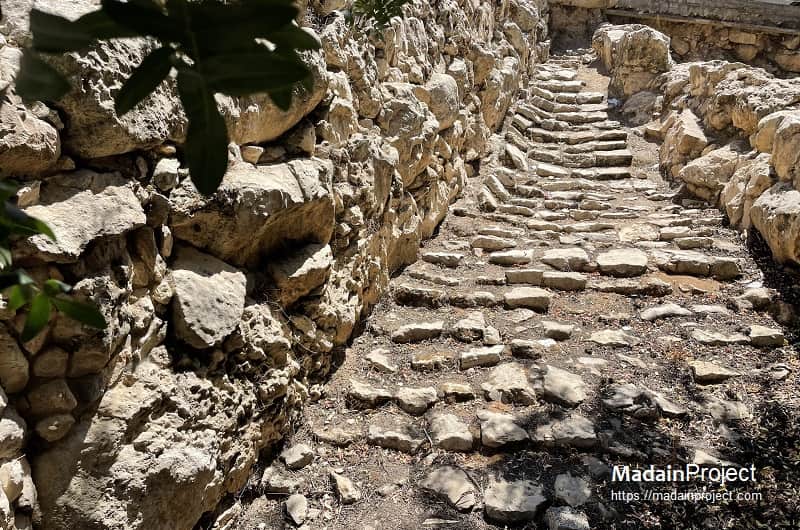Situated in the southern hills of the West Bank, Hebron (al-Khalil) stands as one of the most archaeologically and historically significant cities in Palestine. Excavations at Tel Rumeida and other nearby mounds have revealed successive layers of habitation spanning from the Chalcolithic period through the Bronze Age and the Iron Age, illustrating its continuity as a major urban center across civilizations. The city’s enduring prominence owes not only to its association with patriarchal narratives but also to its strategic position along ancient trade routes linking the Negev, Jerusalem, and the coastal plains. Over millennia, Hebron evolved into a nexus of religious devotion, political authority, and material culture, leaving behind a stratified archaeological record that reflects the shifts in imperial dominion, urban planning, and sacred architecture across the ancient Near East.
Back to Israel/Palestine / Levant / Middle East
Hebron, known in Arabic as al-Khalil, is one of the world’s oldest continuously inhabited cities. Archaeological evidence indicates settlement from the Chalcolithic period, circa 4500–3200 BCE. According to biblical tradition, the patriarch Abraham (Ibrahim) settled in Hebron and purchased the Cave of Machpelah as a family burial site. This cave became the resting place of Abraham, Isaac, Jacob, and their wives, making the city sacred to Judaism, Christianity, and Islam alike. Under the early Israelite monarchy, King David established Hebron as his capital for seven and a half years, around 1007–1000 BCE, before moving his seat of power to Jerusalem.
Following successive Babylonian, Persian, and Hellenistic periods, Hebron came under Roman control. During the late 1st century BCE, Herod the Great built massive stone walls around the Cave of Machpelah, giving the sanctuary much of its enduring monumental form. After the decline of Roman rule, Hebron came under Byzantine control and developed as a Christian site. In 638 CE, Muslim forces captured the city, constructing mosques and establishing it as an important center of Islamic reverence, with continuous pilgrimage and custodianship of the Prophets’ tombs.
During the medieval period, Hebron passed through the hands of several Islamic dynasties, including the Umayyads, Abbasids, and Fatimids. In the 12th century, the Crusaders seized the city and transformed the shrine into a church, but it was reconquered by Salah al-Din (Saladin) in 1187 CE and restored as a mosque. Under the Mamluks (1250–1516 CE), Hebron flourished as a religious and scholarly hub, and many of its architectural features date to this era. The Ottomans took control in 1517 CE and maintained stability for centuries; the city’s old quarter, marketplaces, and religious life largely took their enduring form during this time.
In the modern era, Hebron came under British Mandate rule after World War I. In 1929, violent clashes culminated in the Hebron massacre, leading to the evacuation of the Jewish community. After the 1948 Arab–Israeli War, Hebron was incorporated into Jordan until 1967, when Israel occupied the West Bank following the Six-Day War. Since the 1990s Oslo Accords, the city has been divided into two administrative sectors: H1, governed by the Palestinian Authority, and H2, under Israeli military control. Despite persistent conflict, Hebron remains a deeply symbolic and contested city, revered across faiths and rooted in more than five millennia of human history.

The Cave of the Patriarchs, also known as the Cave of Machpelah, isn't just a tomb; it's a profound, tangible link to the founding stories of three major world religions. Located in Hebron, this ancient site holds immense spiritual significance for Jews, Christians, and Muslims, who all venerate the biblical figures believed to be buried within. Read more

Tel Rumeida, also known as Tel Hebron, is an archaeological mound and neighborhood located in the city of Hebron. Identified as the site of ancient Hebron, it contains archaeological remains dating back to the Chalcolithic period (4th millennium BCE), and likely housed the Canaanite, Israelite, and Edomite settlements mentioned in biblical texts. Read more
The Tomb of Abraham is located within the Cave of the Patriarchs, also known as the Sanctuary of Abraham or the Ibrahimi Mosque, in the Old City of Hebron. The complex is a sacred and highly significant site for Jews, Muslims, and Christians. The tomb itself is one of several cenotaphs, or monumental grave markers, inside the complex, where Abraham and his wife Sarah, along with other biblical figures Isaac, Rebecca, Jacob, and Leah, are believed to be buried.
Signup for our monthly newsletter / online magazine.
No spam, we promise.